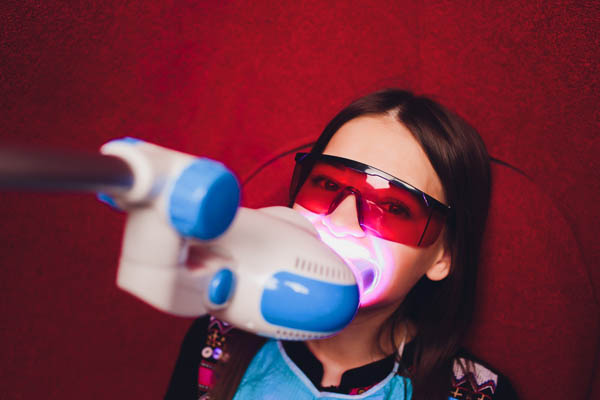Can Cavities Be Treated with Laser Dentistry?

Understanding that laser dentistry is a treatment option for addressing cavities means that dental patients have choices. While not all dental professionals offer laser treatment, many now do as they want to offer their patients treatments that use advanced dental technologies. According to WebMD, lasers may preserve more healthy tooth tissue during cavity treatment.
Laser dentistry and cavities
Thinking laser dentistry is the right choice for you? There are many pros that come with choosing dental lasers during certain dental treatments, including but not limited to minimal pain (if any), minimal bleeding and minimal swelling. These pros support a faster healing time, which is important to patients. The fact that dental lasers can often replace the need for a dental patient to undergo anesthesia means that many patients are looking into this advanced dental treatment option.
About cavity treatment
According to the Centers for Disease Control and Prevention, more than 91% of adults aged 20 to 64 have cavities. The list below offers information on treating cavities using dental lasers.
Lasers remove the infected material
Dental lasers offer patients the ability to undergo a nearly or completely painless cavity treatment experience. Lasers work more quickly to remove any infected material existing in teeth that have cavities, making it so many cavity treatment appointments using dental lasers do not last as long. Lasers simply take the place of dental drills and can remove cavity infections in a quicker and more efficient manner.
Laser light technology
Dental lasers use advanced dental technologies. The light from dental lasers is what works to treat cavities and replaces the need for any type of local anesthesia and the need to use a dental drill. The treatment of any cavities is therefore performed in a quicker manner, as there is only a need to use the laser to prep the tooth.
Lasers = less tooth removal
Dental lasers are able to leave more of the healthy tooth material in place, supporting a dental patient's overall tooth health. The fact that any dental decay present needs to be completely removed from the tooth makes using lasers a good idea, as lasers are a very precise cavity treatment procedure that only removes the decay instead of any of the healthy parts of the tooth. When dental drills are used to treat cavities, they not only move any decay present, they also often remove healthy parts of a patient's tooth.
What lasers cannot do for patients with cavities
Lasers cannot be used to fill cavities that are located in between a patient’s teeth. Lasers also cannot be used when a patient’s cavity is too close to an old filling, for preparing any large cavities for crown placement, for the purpose of removing any problem dental crowns, for removing amalgam fillings or for the purpose of preparing teeth for placing a new dental bridge.
Got cavities?
Interested in using laser dentistry to treat your cavities? While many dental patients who choose to take advantage of undergoing dental laser treatment do so because they experience dental anxiety, any patient can benefit from choosing this cavity treatment option.
Are you considering laser dentistry in the Aurora area? Get more information at https://alamedadentalaurora.com.
Check out what others are saying about our dental services on Yelp: Laser Dentistry in Aurora, CO.
Recent Posts
Thinking about choosing laser dentistry to remove one or more of your oral lesions? Soft-tissue lasers are often used to remove lesions because they offer precise dental treatment. This means that those who choose dental lasers to undergo lesion removal will often experience less pain and less scarring, both of which are important to consider…
Patients often ask about TMJ treatment options when jaw pain, clicking, or headaches disrupt everyday life. The temporomandibular joint (TMJ) links the lower jaw to the skull and powers chewing, speech, and yawning. When the joint or the surrounding muscles become overworked or inflamed, symptoms can include jaw stiffness, ear fullness, limited opening, and facial…
Finding a kid-friendly dentist can transform dental care from a stressful task into a positive experience for young patients. This dental professional creates a warm, welcoming environment, making routine visits and cleanings enjoyable while teaching strong oral hygiene habits. Establishing a trusted relationship with a dental provider in a person's early life can lead to…
Gum disease treatment can restore health to the smile. A family dentist — who often provides cosmetic services in addition to general dental care — offers targeted solutions based on the severity and progression of gum disease. Early detection and prompt intervention can halt or reverse the condition. Exploring how family dentists treat gum disease…


